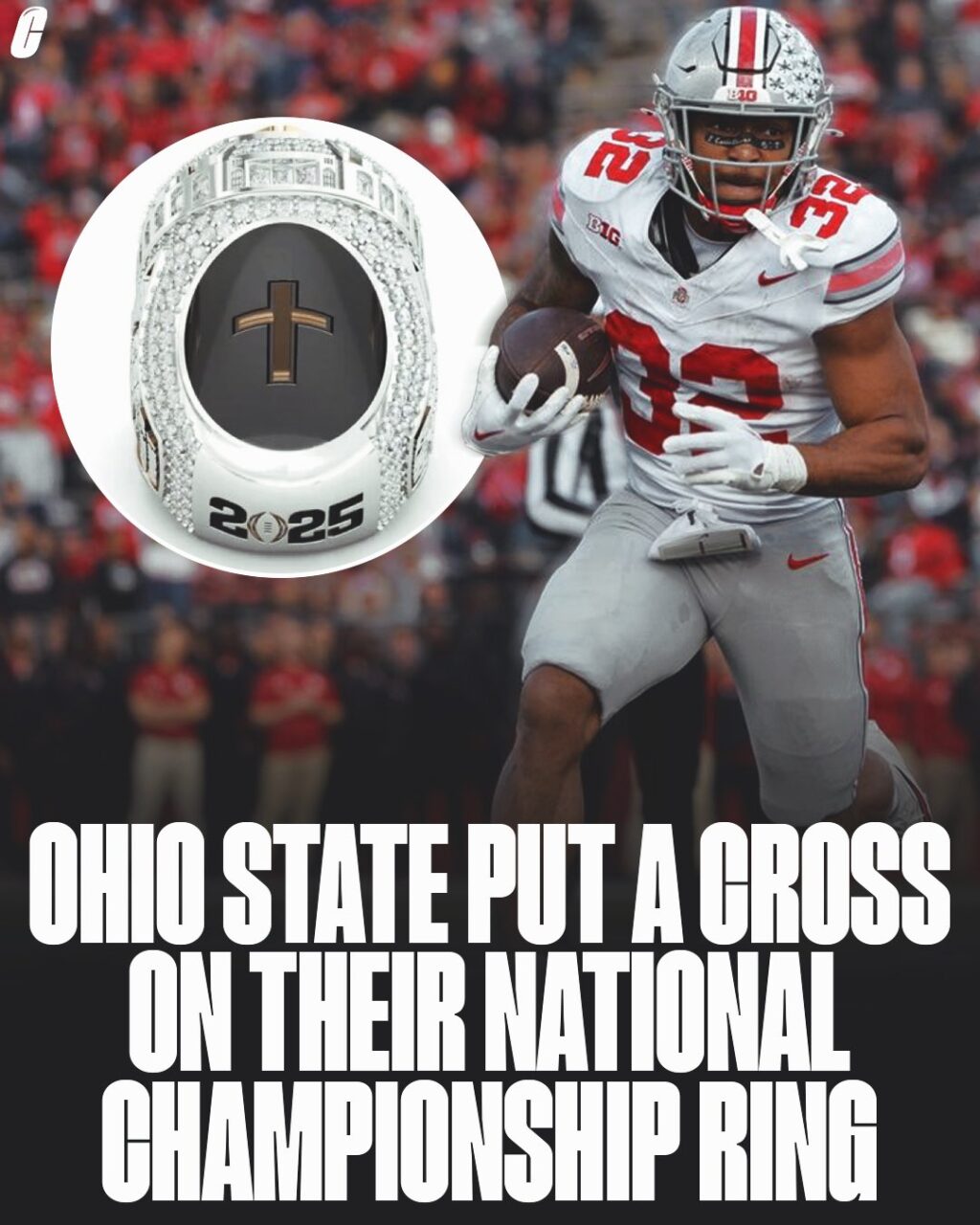BREAKING: Ohio State Faces Backlash Over Cross on Championship Rings, Critics Call It Exclusionary Controversy has sparked after Ohio State included a cross on their championship rings to represent the team’s faith this past season. Non-Christian individuals have voiced concerns, labeling the move as exclusionary.

BREAKING: Controversy Erupts Over Religious Symbolism as Ohio State put a cross on their championship rings representing their teams faith this past season. The non Christian believers criticized the decision, calling it an exclusionary act.

The Ohio State University football team’s recent championship rings, commemorating their victorious season, have ignited a fiery debate. The controversy stems from the inclusion of a prominent cross on the inside of the rings, a symbol chosen to represent the team’s faith throughout their championship journey. While many Christian players and fans have lauded this decision as a testament to their beliefs, non-Christian members of the Buckeye community and beyond have criticized it as a religiously biased and potentially exclusionary act.
The rings, unveiled with much fanfare, are intricate pieces of jewelry celebrating the team’s hard-fought victory. However, the subtle yet significant addition of the cross has overshadowed the athletic achievement for some. Critics argue that a public university team, representing a diverse student body and fanbase, should refrain from overtly endorsing any specific religion. They contend that embedding a Christian symbol on an official team memento could alienate non-Christian players, coaches, and supporters, fostering an environment where one faith is implicitly favored over others.
This viewpoint emphasizes the principles of inclusivity and the separation of church and state, even within a university setting. Objectors believe that the team’s faith is a personal matter and should not be institutionalized or publicly displayed on official symbols. They express concern that such actions could lead to feelings of marginalization among those who do not share the team’s religious beliefs. Some have gone as far as labeling the decision a “religious fanatical act,” accusing the team and the university of imposing Christian values on the entire Buckeye community.
Conversely, supporters of the cross on the rings argue that it is a genuine reflection of the team’s collective faith and the role it played in their success. They highlight the players’ and coaches’ numerous public expressions of their Christian beliefs throughout the season, including pre-game prayers and post-game acknowledgments of God’s influence. For them, the cross is a meaningful symbol of unity and the spiritual foundation upon which their victory was built.
Furthermore, proponents emphasize the team’s right to express their faith, viewing the inclusion of the cross as a personal statement rather than an official endorsement by the university. They argue that the symbol does not exclude anyone but rather represents the deeply held beliefs of a significant portion of the team. Some Christian fans see the criticism as an attack on their religious freedom and an attempt to suppress expressions of faith in the public sphere.
The controversy raises complex questions about the intersection of sports, religion, and public institutions. While athletes undeniably have the right to their personal beliefs, the use of religious symbols on official team representations in a public university setting treads a delicate line. Universities, striving for inclusivity, often navigate a landscape where accommodating religious practices must be balanced with upholding the principles of secularism and ensuring a welcoming environment for individuals of all faiths and no faith.
The debate surrounding the Ohio State championship rings underscores the ongoing tension between religious expression and the commitment to inclusivity in diverse communities. It serves as a reminder of the varying perspectives on the role of faith in public life and the importance of fostering dialogue and understanding in the face of differing beliefs. As the controversy continues to unfold, it will be crucial for the university and the team to address the concerns raised while respecting the sincerely held beliefs of all members of the Buckeye family.







